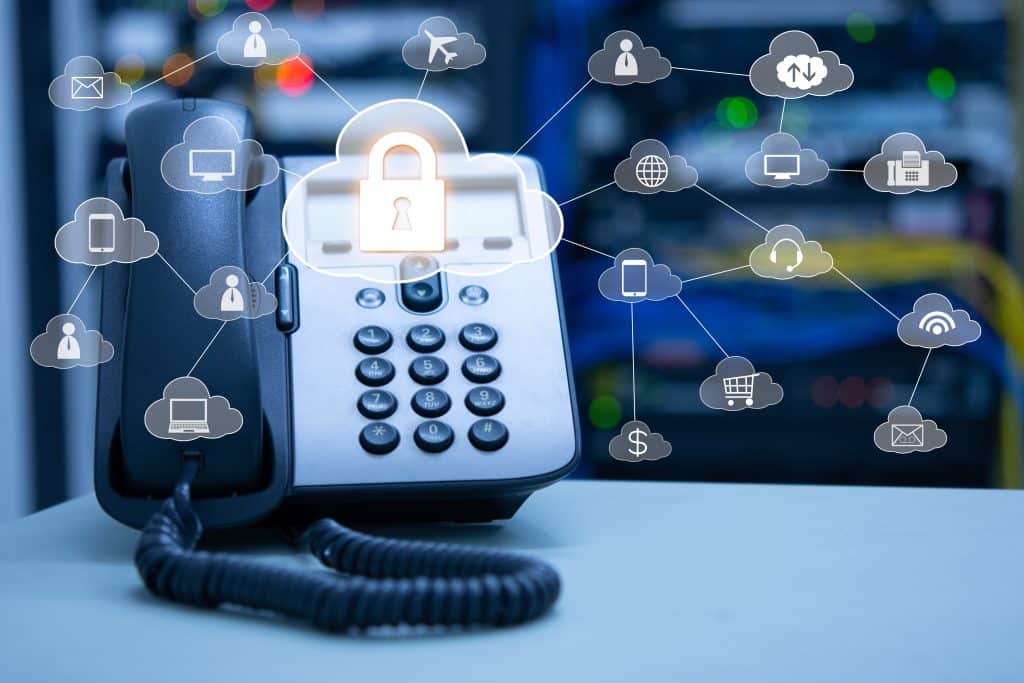Do you ever wonder how secure your VoIP calls really are? In today’s tech-driven world, VoIP (Voice over Internet Protocol) has revolutionized communication, offering businesses and individuals a cost-effective, versatile solution. However, the convenience of VoIP comes with security risks, such as data theft, eavesdropping, and fraud.
Understanding these risks and how to mitigate them is crucial for protecting your communications. From advanced encryption to proactive monitoring, there are actionable steps to ensure your VoIP system is safe. Let’s explore what you need to know to keep your calls secure and avoid potential vulnerabilities.
Understand Encryption and Its Role
Encryption is the backbone of VoIP security, protecting your data during transmission by converting it into unreadable code. However, not all encryption is equal. Ensure your provider uses Secure Real-time Transport Protocol (SRTP) for voice data and Transport Layer Security (TLS) for signaling protocols.
Go beyond simply enabling encryption—verify its implementation. Many providers claim to use encryption, but improper configuration can leave vulnerabilities. Regularly audit your system to confirm encryption is functioning as intended. For sensitive communications, consider providers that offer end-to-end encryption, which ensures that only the intended recipient can decrypt the call.
Choose a Secure VoIP Provider
Not all VoIP providers are secure, so it’s essential to make an informed choice. A reliable provider should offer advanced encryption, regular updates, and compliance with data protection regulations such as GDPR and CCPA. These measures help ensure your data stays private and protected from unauthorized access.
When evaluating providers, look for those with a strong track record in handling security incidents and offering clear disaster recovery protocols. For example, Comexcel uses strong encryption and offers 24/7 monitoring to quickly detect and address vulnerabilities. By prioritizing these features, businesses can better safeguard their communication systems against evolving threats.
Safeguard Your Network Against Threats
Your VoIP system is only as secure as the network it operates on. Cybercriminals often exploit weak networks to intercept calls or launch attacks like toll fraud and Denial of Service (DoS). Start by securing your infrastructure with robust firewalls and Intrusion Detection Systems (IDS).
Implementing Virtual Private Networks (VPNs) is another critical step, especially for remote teams. A VPN encrypts all internet traffic, making it harder for attackers to intercept data. Regularly update your network devices, such as routers and modems, to ensure they have the latest security patches. Strong, unique passwords for each device further reduce the likelihood of unauthorized access.
For additional protection, use Session Border Controllers (SBCs), which monitor and control communication traffic to detect and block suspicious activity. Proactively safeguarding your network creates a strong barrier against potential vulnerabilities.
Recognize and Address Emerging Threats
The cybersecurity landscape is constantly evolving, and new threats to internet-based communication systems emerge regularly. Common risks include phishing attacks (vishing), ransomware targeting call data, and vulnerabilities in SIP-based protocols. For example, a recent report by TechRadar highlights how ransomware attackers exploited vulnerabilities in VoIP software to gain unauthorized access to organizational networks. This case underscores the importance of timely software updates and proactive monitoring.
Use automated tools to monitor your system for unusual activity, such as unexpected spikes in data usage or repeated login attempts. Subscribe to threat intelligence feeds or industry reports to stay updated on the latest developments. Regular penetration testing can help identify weak points, enabling you to address vulnerabilities before they are exploited.
Train Your Team on Security Best Practices
Human error is one of the biggest vulnerabilities in VoIP security. Educating your team about best practices can significantly reduce the risk of breaches. Regular training sessions should cover topics like recognizing phishing attempts, setting strong passwords, and safely handling sensitive data.
Additionally, teaches employees how to use features securely, such as disabling auto-answer functions that could allow unauthorized call interception. Encourage a culture of vigilance by keeping employees informed about new threats and providing them with clear guidelines for reporting suspicious activity. When everyone in your organization prioritizes security, your system becomes far more resilient.
Monitor and Audit Your VoIP System Regularly
VoIP security is not a one-time setup—it requires continuous monitoring and maintenance. Real-time alerts can help you detect unusual activity, such as unauthorized login attempts or unexpected call patterns.
Perform regular audits of your system to identify outdated software, unnecessary access permissions, and other vulnerabilities. Ensure all connected devices are updated with the latest firmware and security patches. Incorporate automated tools that scan for weak points and suggest actionable fixes.
Ongoing vigilance ensures your system remains secure and adapts to emerging threats, providing peace of mind for both personal and business communication.
Plan for Incident Response
Despite the best security measures, breaches can still occur. Having a robust incident response plan in place is essential for minimizing damage and restoring operations quickly. Your plan should include steps for isolating affected systems, notifying relevant stakeholders, and contacting cybersecurity experts.
Regularly review and update your response plan to account for new types of attacks and ensure your team knows their roles during an incident. A well-prepared response plan can make all the difference in mitigating the impact of a security breach.
Conclusion
VoIP technology offers unparalleled convenience, but it also introduces unique security challenges. By selecting a secure provider, implementing encryption, safeguarding your network, and staying informed about emerging threats, you can protect your communications effectively.
Ongoing training, regular audits, and a robust incident response plan ensure your VoIP system remains resilient against evolving cyber threats. With these measures in place, you can confidently enjoy the benefits of VoIP without compromising on security. Stay proactive and vigilant to keep your conversations private and secure.



